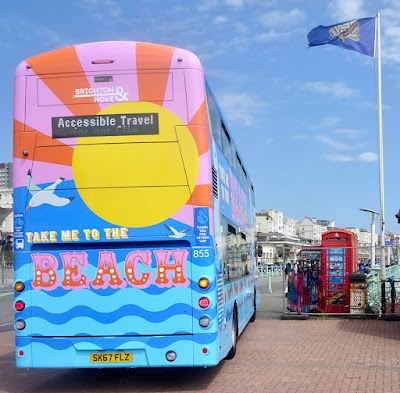Brighton had its part to play. Campbell’s Sussex steamers - most prominently the earlier Devonia and the newly renamed Brighton Belle - were advertised on the Palace Pier railings and along the West Pier concourse, offering passengers a full afternoon cruise along the Sussex coast before joining the mass of small excursion craft mustering off Spithead. Leaving Brighton in mid-afternoon and early evening, the steamers carried holidaymakers through warm Channel air, past Shoreham and Worthing, and on towards the Isle of Wight, where the lines of warships stretched out like a floating city. Once darkness fell the fleet was illuminated from stem to stern, with searchlights sweeping across the water as the royal yacht made its slow progress through the anchorage.
Before the war and on this stretch of coast, the most powerful steamer, operated by Campbell, had been the Brighton Queen, a broad-sponsoned paddler that dominated departures from the pier. Recognisable from her high funnel (see photo, also from the Palace Pier book), she would shoulder out into deeper water before turning. But in 1915 she had been lost on minesweeping duty, and by 1924 she existed only in postcards and recollections traded on deckchairs below the pier head.
In 1924, the scale of the Naval Review would have been impressive, ships ranged in perfect alignment, their electric outlines reflected perhaps in still water, and the succession of salutes and night-time illuminations that carried on long after the King had departed. For Brighton’s excursionists it was a full day and night away, but the piers were busy again before breakfast, with talk of the searchlights, the size of the battleships, and how the holiday steamers seemed tiny against the bulk of the fleet. It was one of the last great Reviews before the naval reductions of the 1930s, and for those who embarked from the Palace Pier that July, it was a rare glimpse of the world’s largest fleet assembled within a day’s sail of Brighton Beach.
It is worth noting that the authors of Palace Pier mistook the poster above as advertising a much earlier and pre-war event. The caption (in the book but edited out of the poster image) reads ‘The coronation of King Edward VII was to have taken place on 26 June 1902. A few days before the coronation the King was taken ill with appendicitis and the Naval Review was postponed. The King made a speedy recovery and the event took place on 16 August 1902.’ However, the Brighton Belle, one of the two vessels making the round trip to Spithead, was not even built until 1905!


































.jpeg)





